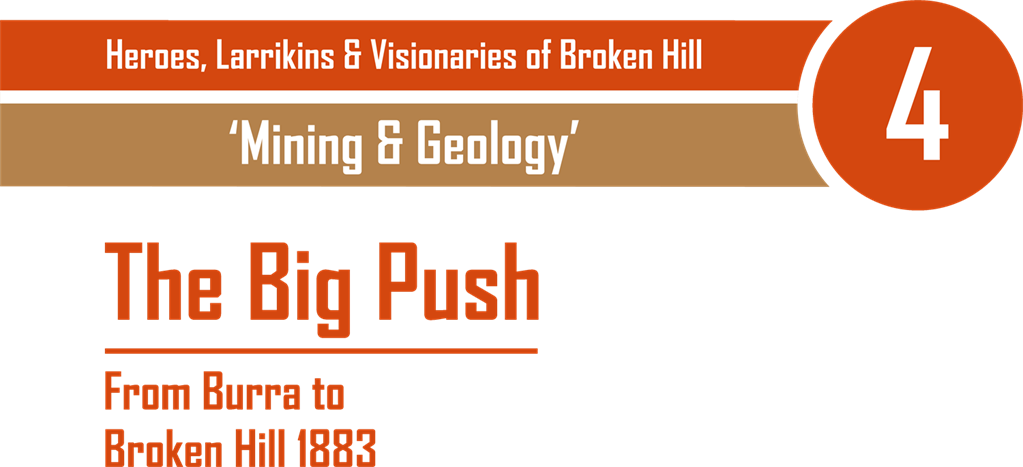The Big Push

Australia needed miners in the nineteenth century. There were mining booms across the country: from gold in northern Queensland to copper in South Australia whilst the plummeting price of minerals in Europe, mine closures in Cornwall and unemployment made the lure of riches and adventures abroad irresistible in the mid-1800s. Many immigrants already had relatives who had settled in Australia for one reason or another. Over the second half of the nineteenth century, tens of thousands of miners left their homelands for Australia and North America.
The arrival of Cornish miners was good news for the Australian economy. Copper mining in Burra, South Australia, started in 1845 and rapidly expanded to Moonta and Wallaroo. The area became known as the Copper Triangle.
News travelled quickly in mining circles. There was an exodus from the South Australian copper mines when gold was discovered in Victoria in the 1850s. So, when the world’s largest silver, zinc and lead ore body was discovered in Broken Hill, coinciding with the decline of copper in Burra, there was another exodus.
In 1883, when Broken Hill was still more a mining camp than a town, miners from many nations, and especially Cornish miners and their families, packed up their tools to start the long trek from Burra. This extraordinary 480-kilometre journey across unchartered scrub and desert, with neither road nor track to follow, became known as the Big Push. Families undertook it on foot, wheeling their belongings in roughly made barrows. The level of hardship and determination has been described as a heroic feat. The Big Push was re-enacted by relay teams travelling on sealed roads during Broken Hill’s centenary celebrations in 1983.
Audio transcript available.
PICK UP YOUR FREE BROCHURE & MAP OF THIS TRAIL FROM THE VISITOR INFORMATION CENTRE